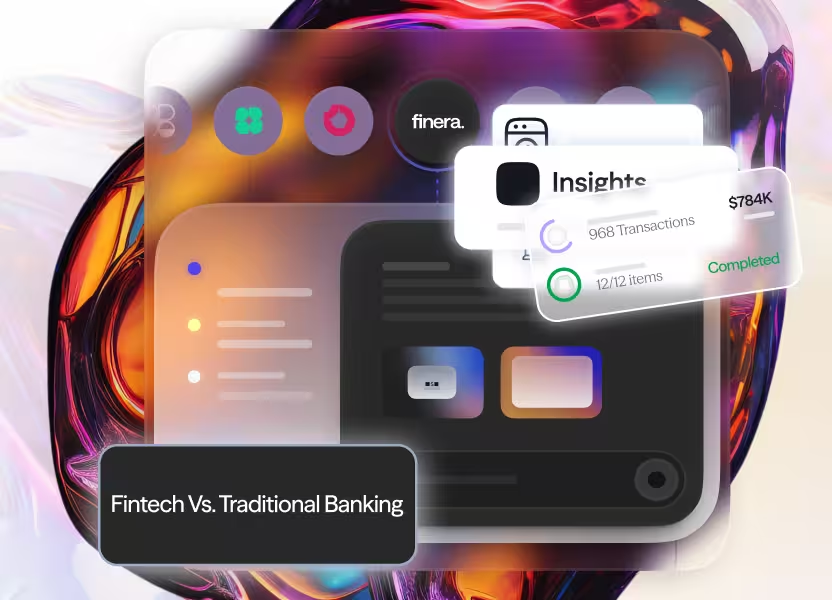5 Fintech Innovations That Are Reshaping Payments
Explore 5 key fintech trends reshaping payments, boosting speed, security and global reach.

Traditional payment methods, slow settlement, limited payment options and high costs cannot keep up with the accelerated evolution of the digital economy. Today's merchants demand agility, efficiency and innovation in their payment infrastructure. That is where fintech innovations reshape payments: powering smarter routing, better acceptance and seamless experiences.
Here are five breakthrough technologies redefining payments in 2025.
1. Real-Time Payments Innovation: Instant Settlement as the New Standard
Real-time payment innovation is more than just fast, it’s transformative. Instant rails such as India’s UPI, Europe’s SCT Inst and the U.S.’s FedNow service enable funds to clear in seconds, enabling merchants to receive money instantly and improve cash flow predictability.
Such systems have achieved astronomical scale: India’s UPI, recently processing nearly 18 billion transactions monthly, has positioned the country as a global leader in real-time digital payments. Furthermore, the 2024 ACI Worldwide report found that real-time payments accounted for approximately 19% of electronic transactions in 2023, with growth accelerating 42% year-on-year.
RTP systems offer immediate, frictionless payment experiences, effectively eliminating the delays associated with traditional payment methods. This innovation is transforming global business fund management and user expectations.
2. Open Banking & Embedded Finance: Payments Embedded in Experience
Open banking for global commerce combined with embedded finance in payments is eliminating silos in the customer journey. Consumers no longer need to juggle payment apps or cards to complete a purchase, they can transact directly from their bank account inside an app or platform.
Powered by regulations like PSD2 in Europe, embedded finance has transformed payments into a seamless feature. This model increases trust, minimises reliance on cards and lowers barriers to entry in markets where alternative payment methods dominate.
Simply put, bank-to-bank payments are being delivered without leaving the merchant interface, boosting conversion while staying within user intent and context.
3. AI‑Driven Fraud Detection in Payments: Making Security Smarter and Faster
As AI fraud detection in payments advances, merchants no longer rely solely on static rules. Instead, machine learning models monitor behavioural patterns, velocity anomalies, geographic shifts and time-based risk signals, all in real time.
Mastercard, for example, now uses generative AI to detect compromised card activity faster than ever, preventing fraud before it occurs and reducing false positives. Industry research shows that organisations leveraging AI-driven detection can reduce fraud by up to 300% and significantly cut review times and operational friction.
This shift improves both security and experience, providing smart protection without slowing checkout, which every payment orchestration strategy should embrace.
4. Digital Wallets & Super‑Apps: Local Mobile-First Payment Hubs
Digital wallets and super-apps like GCash are redefining payments, especially in emerging market economies. These platforms leverage QR-based transactions and in-app payments to offer user-centric, mobile-first experiences.
Schemes such as the ASEAN Integrated QR Code Payment System allow regional interoperability between wallets, reducing reliance on legacy card rails and improving local acceptance.
Such innovations align payment methods with consumer habits in regions where card penetration is low. For businesses expanding into diverse markets, support for local APMs via digital wallets is crucial for conversion optimisation.
5. Payment Tokenisation Technology: Securing Value with Digital Assets
Global payment tokenisation is redefining settlement by providing programmable money, especially cross-border. Governments and major banks now experiment with USD-pegged coins and blockchain tokens to lower FX fees and speed up remittances.
Meanwhile, tokenisation technology replaces sensitive card or banking data with secure, one-time-use tokens, significantly reducing risk and maintaining PCI compliance.
Together, these innovations help build payment systems that are secure, fast and globally interoperable, critical traits for modern commerce and orchestration-based infrastructures.
Why These Fintech Innovations Are Game-Changing
Together, these five fintech innovations are creating a virtuous cycle, faster transactions, smarter security, lower costs and better customer fit. For businesses using a payments orchestration platform, they become more than trendy phrases, they are foundational drivers of conversion, resilience and scale.
- Real-time rails enhance cash flow and reduce friction.
- Embedded finance supports native, unified experiences.
- AI security protects revenue and reputation.
- Wallets localise payments in underserved markets.
- Stablecoin rails and tokenised data future-proof operations.
Future-Proofing Payments with Fintech Innovation
The global payments landscape is undergoing a transformation, becoming faster, smarter, and increasingly customer-centric. From real-time payments and AI-driven fraud prevention to open banking, digital wallets and payment tokenisation, each innovation solves a critical friction point in today’s digital commerce journey.
For modern businesses, staying competitive means adopting technologies that improve approval rates, reduce risk, and enable seamless cross-border expansion. The move toward orchestration-ready infrastructure isn’t just a trend. It’s the future of scalable, intelligent payments.
As these technologies mature and regulatory frameworks evolve to support them, businesses that build with flexibility and innovation in mind will be best positioned to lead. For e-commerce brands, platforms and marketplaces operating globally, adopting crucial fintech innovations in payments is now a necessity.
This article on payment methods is for informational and educational purposes only.
- Not Professional Advice: The content provided does not constitute financial, legal, tax, or professional advice. Always consult with a qualified professional before making financial decisions.
- No Liability: The authors, contributors, and the publisher assume no liability for any loss, damage, or consequence whatsoever, whether direct or indirect, resulting from your reliance on or use of the information contained herein.
- Third-Party Risk: The discussion of specific payment services, platforms, or institutions is for illustration only. We do not endorse or guarantee the performance, security, or policies of any third-party service mentioned. Use all third-party services at your own risk.
- No Warranty: We make no warranty regarding the accuracy, completeness, or suitability of the information, which may become outdated over time.
Frequently Asked Questions
Fintech innovation in payments refers to new technologies and approaches that improve how financial transactions are processed. This includes solutions like real-time payments, payment orchestration, digital wallets, open banking and AI fraud detection, all designed to increase speed, reduce friction and enhance security in the payments ecosystem.
Digital wallets are vital because they offer fast, secure, mobile-first checkout experiences. In many markets, they have overtaken traditional card payments, especially among younger and mobile-first consumers. Popular examples include Apple Pay, Google Pay, and GCash.
Payment orchestration platforms allow businesses to connect to multiple PSPs, acquirers, and local payment methods through a single API. This improves approval rates, enables smart routing, reduces costs and adds resilience, essential for global, multi-market businesses.
AI in payments is used for fraud detection, transaction monitoring, customer insights and even smart routing decisions. AI algorithms can spot unusual activity, prevent chargebacks and enhance user experience by predicting optimal payment flows.
Open banking enables direct, API-based bank connections, allowing faster, more secure payments with fewer intermediaries. In cross-border commerce, it reduces failed payments, speeds up settlement and supports better compliance with regional regulations.

Still Have Questions?
Let’s Find the Right Solution for You
Stay Connected with Us!
Follow us on social media to stay up to date with the latest news, updates, and exclusive insights!







.avif)
